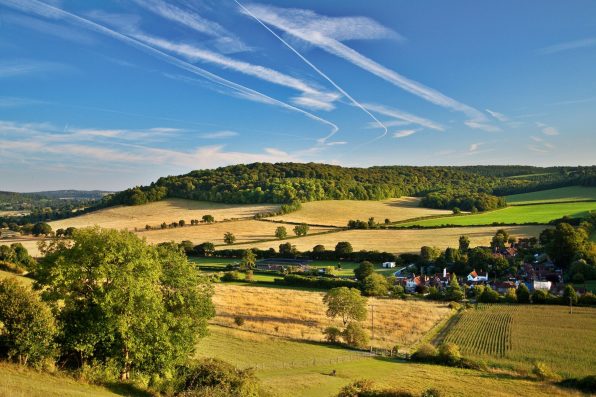Recent Excavations In England Uncovered A Blacksmith’s Workshop From The Iron Age That Operated Around 2,700 Years Ago In The Countryside

Around 2,700 years ago, a blacksmith’s workshop from the Iron Age had been operating in the English countryside. Its remains were unearthed during excavations in Oxfordshire, which were led by a team from DigVentures, a company that supports archaeological projects.
The ancient workshop was found near the Wittenham Clumps, a pair of wooded chalk hills that are one of the area’s most visited historic landmarks.
It contained pieces of hearth lining, byproducts of the iron forging process, a specialized iron bar used for crafting artifacts, and most extraordinary of all, an intact tuyere, which is a nozzle that channels air into a furnace or a hearth. The tuyere was one of the few examples of its kind in Europe.
“It’s exceptionally rare to find a complete tuyere, especially one that’s as old as this. Although there were examples from later periods, including Saxon, Viking-age, and medieval pieces, this is one of the only known Iron Age ones in the country, if not Europe,” said Gerry McDonnell, an expert who examined the finds.
“The fact that it dates not just to the Iron Age but to the first few centuries of ironworking in Britain is remarkable,” McDonnell continued. “What’s more, the size of it suggests we’re looking at a hearth that was much larger and more specialized than that of your average village smithy.”
Radiocarbon dating revealed that the workshop dated back between 771 and 515 B.C. Ironworking arrived in Britain around 800 B.C. The evidence at the site indicates that the workshop belonged to a “master blacksmith” who had the skills to produce tools, weaponry, chariot wheels, and other items of high value.
During the Iron Age, the majority of hearths were small since the objects that were typically produced were not very large. The recently discovered workshop was larger than most, so it was clear that bigger items were forged there.
In addition, a larger hearth would require more expertise to manage, which makes it likely that a master blacksmith had been in charge of the operation.
The Iron Age began after the arrival of ironworking methods from southern Europe. It was a period when iron artifacts became widespread across Britain, gradually reducing the use of bronze.

DazGee – stock.adobe.com – illustrative purposes only
The transition marked a significant cultural shift and advancement in technology, revolutionizing many aspects of life, like agriculture.
However, it is rare to find evidence of ironworking at archaeological sites, especially ones from the era’s early years.
Other Iron Age buildings were located at the site as well, including a cluster of roundhouses, a pantry, and a Roman villa that contained the remains of a small pet dog.
Within the vicinity of the site, there were also signs pointing to ceremonial activities that had taken place in the area, such as animal burials.
Sign up for Chip Chick’s newsletter and get stories like this delivered to your inbox.
More About:News





